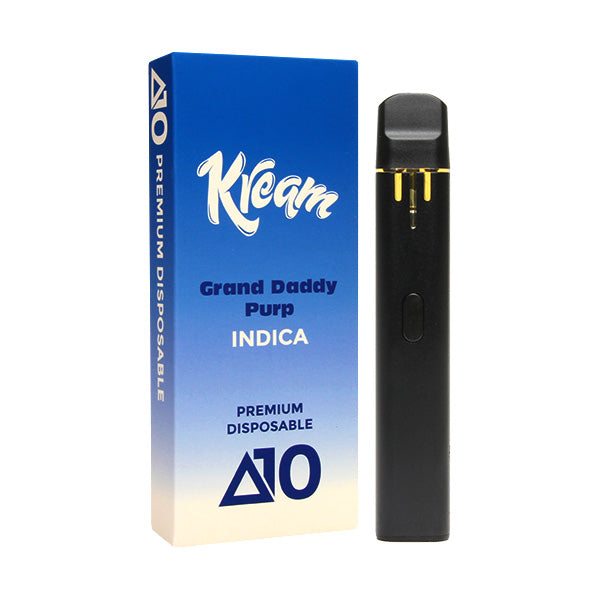Dive into the World of Kream Disposable Vapes: Where Flavor Satisfies Mobility
Dive into the World of Kream Disposable Vapes: Where Flavor Satisfies Mobility
Blog Article
Discovering the Ecological Influence of Non Reusable Vape Pens: What You Need to Know
In the world of non reusable vape pens, a closer evaluation of their ecological impact exposes a complicated internet of interconnected variables that necessitate our attention. From the manufacturing processes and products utilized to their ultimate disposal and influence on air quality, the effects of these relatively practical gadgets expand far beyond their immediate usage. Understanding the full scope of their ecological footprint is essential for making educated choices concerning our consumption routines and the prospective choices offered.
Production Processes and Products
Disposable vape pens are generally made utilizing a range of materials and procedures that can have substantial environmental effects. The major components of non reusable vape pens consist of a battery, burner, e-liquid reservoir, and a mouthpiece. The battery is frequently made from lithium, a non-renewable resource that needs significant energy to extract and process. The e-liquid reservoir is generally made of plastic, contributing to the ecological problem as a result of its non-biodegradable nature. The home heating aspect, normally made from metal alloys, also adds to the ecological influence via the removal and processing of resources.
Moreover, the manufacturing processes included in creating disposable vape pens can additionally worsen their ecological footprint. Taking into consideration these variables, it is important for consumers and suppliers to be mindful of the ecological consequences linked with the manufacturing and use of non reusable vape pens.
Energy Intake in Production
During the manufacturing process of non reusable vape pens, the power consumption included plays a substantial duty in identifying their general ecological effect. The production of disposable vape pens requires power for numerous stages, consisting of removal and handling of basic materials, manufacturing components like batteries and home heating aspects, product packaging, transportation, and setting up. The removal and handling of materials such as chemicals, plastics, and steels demand significant power inputs, adding to the overall carbon footprint of the item. Furthermore, the manufacturing procedures included in developing the complex parts of vape pens, such as batteries and electronic circuitry, count greatly on energy-intensive procedures.
To address the ecological effects of power consumption in production, suppliers can embrace a lot more lasting methods. This can consist of using renewable resource resources for producing procedures, enhancing production procedures to minimize power waste, and implementing energy-efficient modern technologies. By focusing on energy effectiveness and sustainability in production, the environmental impact of disposable vape pens can be minimized, adding to a greener and more responsible vaping sector.
Disposal and Waste Monitoring

Non reusable vape pens have parts such as batteries, digital circuits, and plastic coverings that can be unsafe otherwise thrown away properly (kream disposable). The lithium-ion batteries in vape pens, for instance, pose a significant danger if they finish up in land fills, as they can leak harmful materials right into the dirt and water
Recycling programs specifically made for digital waste ought to be advertised to urge customers to reuse their disposable vape pens sensibly. By improving disposal practices and waste administration strategies, the ecological influence of non reusable vape pens can be view dramatically decreased.
Effect On Air Top Quality
The existence of non reusable vape pens contributes to the deterioration of air top quality in metropolitan environments where their use is common. When people use non reusable vape pens, they release damaging substances into the air.
Additionally, the disposal of vape pen batteries, which commonly consist of hefty steels like cobalt, lithium, and nickel, can lead to air contamination if not taken care of properly. Inappropriate disposal methods, such as incineration or landfilling, can release these poisonous steels into the air, contributing to air contamination and possibly creating damage to human health and wellness.
To mitigate the impact of non reusable vape pens on air high quality, advertising recognition regarding proper disposal techniques, motivating reusing programs for vape pens and batteries, and informing individuals regarding the environmental repercussions of these devices are important action in lowering their ecological impact.
Alternatives and Sustainable Options
Taking into account the ecological effect presented by disposable vape pens, exploring choices and lasting choices is imperative for minimizing environmental injury. One lasting choice is to switch to refillable vape pens that permit individuals to reenergize the gadget with e-liquid, substantially minimizing the amount of waste produced. These refillable pens typically have longer lifespans, causing less gadgets winding up in garbage dumps. Additionally, picking vape pens made from recyclable materials can better lessen the environmental impact. Producers are increasingly supplying environmentally friendly alternatives, such as pens created from recycled metals or biodegradable plastics.
An additional choice is to go with vape gadgets that make use of exchangeable coils and components, as opposed to completely disposable systems. By just changing the necessary components, individuals can reduce the total waste created. In addition, some firms have actually begun applying take-back programs for utilized vape pens, where they accumulate and reuse the gadgets correctly. Urging accountable disposal methods among customers can additionally add to minimizing the environmental effect related to vape pens. Making educated options and sustaining sustainable alternatives can play an important duty in reducing the environmental consequences of vaping.
Conclusion
In verdict, the environmental influence of disposable vape pens is considerable, recommended you read with unfavorable results on air high quality, power consumption in production, and waste management. It is critical for consumers to take into consideration the sustainability of their choices and select options that have a visit this page reduced ecological footprint. By making notified choices and supporting lasting practices, people can add to decreasing the ecological harm brought on by non reusable vape pens.

Effective disposal and efficient waste administration are important aspects to think about when assessing the ecological impact of disposable vape pens. By enhancing disposal practices and waste monitoring methods, the ecological impact of non reusable vape pens can be dramatically minimized.
In final thought, the environmental influence of disposable vape pens is considerable, with negative results on air top quality, energy intake in production, and waste administration.
Report this page